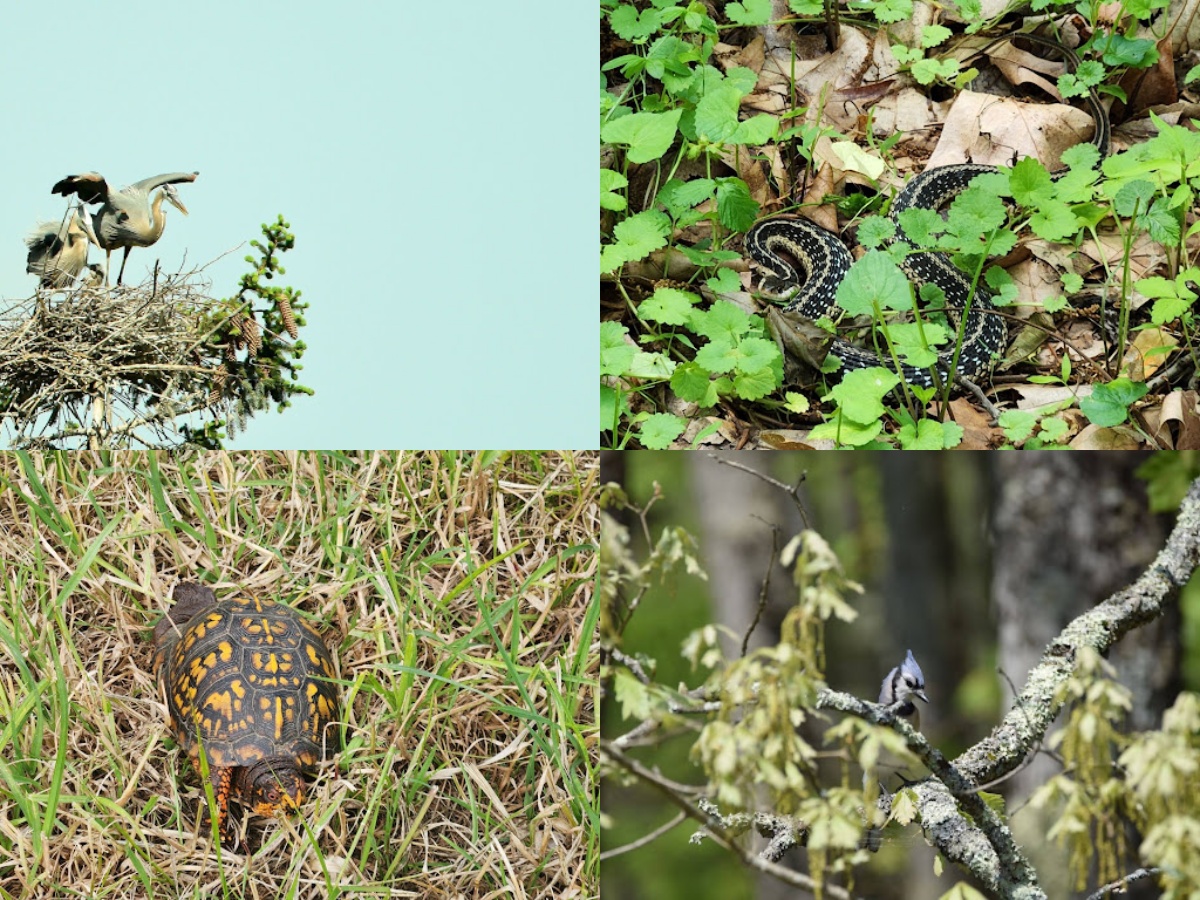Appreciating the Familiar
In the spring of 2019, I studied abroad in Madagascar, an island where people live with some of the world’s most unique species. One of those incredible animals is the Panther Chameleon. This chameleon is endemic to northern/northeastern Madagascar and they absolutely thrive there. Seeing one of these large reptiles in the courtyard garden of my host family’s Antahala home was like seeing a rabbit in my real family’s Pennsylvania backyard – a fairly regular occurrence. Locals looked upon the Panther Chameleon with anything from vague interest to disinterest to dislike. In some cases coming across a chameleon would even elicit a squeal and recoil, as some Americans react to spiders. Yet to me, the outsider, here was one the coolest animals I had ever beheld.
With time, I could see my enjoyment of chameleons rub off on my Malagasy friends. Sometimes we need the enthusiasm of an outsider to spark our own, a new perspective to reframe our relationships. Coming back to the US that summer of 2019, I was struck with a feeling for days that what was once plain and familiar now stood out as more detailed, more saturated. We have a wealth of beautiful nature here in Pennsylvania too, and my eyes had just stopped focusing on the finer details.
So here is a call to refocus your eyes on the beauty around us. I am not the first person to notice that people take for granted the good things in their lives that are consistent, common, familiar, nor the first to suggest we should express more appreciation for these small daily gifts. There are abundant resources on the internet for help practicing gratitude. America has an entire holiday dedicated to thankfulness. Many religious traditions have prayers or other practices for encouraging regular expressions of appreciation for all that we have. Whatever your rituals of gratitude are, consider adding the following native species who share our corner of this spinning rock in the void of space with us.
10 Common and Abundant Species to Watch For
This is not an exhaustive list of every cool species you may run into, just a starting point for curiosity.

Black-Capped and Carolina Chickadees (Poecile atricapillus and P. carolinensis)
Distinguishing between our two chickadee species is difficult, but giving these tiny members of the paridae family our close attention is worthwhile. Chickadees are the subject of some very interesting recent linguistic research. During migration seasons, chickadees are often the talkative core members of multi-species flocks. The name “chickadee” is onomatopoeia for their common call: chick-a-dee.
Researchers have figured out that these calls are made up of five distinct notes that must always be sung in the same order, but each note can be removed or repeated as many times as the caller chooses. Repeating different notes appears to elicit different reactions from other birds. For example, repeating the first note often happens when a new potential threat is introduced to a flock’s surroundings, and fewer individuals take flight during that time.
On the other hand, repeating the last note brings more birds to the caller’s location, often a source of food or an enemy that the flock is mobbing. Chickadees repeat the second note more frequently while flying, potentially useful for group cohesion as they all move together through a forest where sightlines are limited.
What these researchers are documenting is one of the most complex inter-species signaling systems in the non-human world, essentially a very basic form of language. Most of this research has been focused on Carolina chickadees, but repeating some of the experiments on black-capped chickadees has produced similar results. Listen closely next time you see one of these striking songbirds at your feeder or flying about the forest.

Photo from Flickr, attribute to Mick Thompson, CC BY-NC 2.0
American Crow (Corvus brachyrhynchos)
The American Crow is another beautiful and intelligent bird. Crows are generalists whose diets include but are not limited to carrion. Their association with scavenging combined with their sleek, iridescent black feathers has cemented them a powerful symbol of death and doom, but these lively birds are so much more than symbols.
Crows are highly social, living in multigenerational family units and congregating in the winter in flocks numbering from hundreds to millions of birds. Crows teach each other the survival lessons they’ve learned, passing information between the generations, including information about which humans have fed them and which have been harmful to them. If crows’ human-like social structures and ability to recognize individual people isn’t uncanny enough, consider that some crows have been documented building and using simple tools.
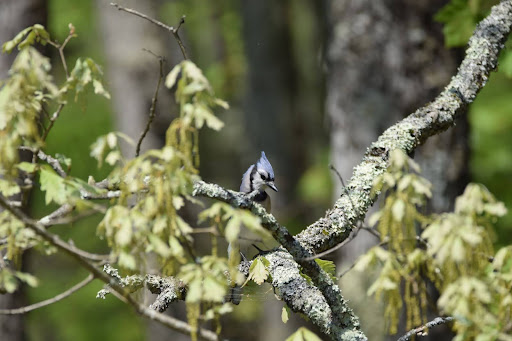
Blue Jay (Cyanocitta cristata)
Bluejays may not be working on developing language or building tools, but these expressive, dynamic birds have helped to plant forests many times over. Blue jays eat a variety of foods, and near the top of that list is acorns, the seeds of oak trees. Blue jays can manage to carry up to 5 acorns at a time and will cache those acorns away for later like squirrels do.
But unlike squirrels, blue jays can travel further, store their acorns individually, and are particularly discerning about the quality of their acorns, not wasting their time on weevil-infested ones. As a result, blue jays are in the lead for the title of “best seed distributor for oaks.” This work is invaluable because the oak genus is a huge source of food for many other bird, mammals, and insect species.
Some observe that this large species of corvid is a bully at the bird feeder, throwing its weight around and being noisy, but birdfeeders bring out aggression in many bird species, including blue jays, who have some clever tricks for clearing their path to the buffet. Blue jays are skilled mimics and have been documented imitating hawk calls to scare off the other birds before swooping in to feast at the feeders. Also, you can tell how aggressive a jay is based on the position of its crest. The taller and more fluffed up their crest is, the more agitated they are.

Northern Mockingbird (Mimus polyglottos)
Speaking of talented mimics, few birds are as skilled at copying sounds as the northern mockingbird. African gray parrots, Australia’s lyrebird, and Lawrence’s Thrush of South America may all be tough competition for the title of best mimic in the world, but within North America, the mockingbird is the champion. The primary known motivator for mockingbirds to mimic? Impressing their mates. The greater the variety of calls a male can sing, the better chance he has of attracting a female. There may be other adaptive uses for this skill, perhaps confusing predators or warning off other birds, but these theories have not been confirmed. Once paired up, mockingbirds have 2 or 3 broods in a year and are very territorial. Mockingbirds have even been known to fend off dogs and cats who wander too close to a nest.

Great Blue Heron (Ardea herodias)
Unlike the first birds on this list, great blue herons have not earned their place on this list with their intelligence; rather it is their impressive size and beauty that set them apart from the rest. Standing 3’9” to 4’6” tall with a wingspan of 5’6’ to over 6.5 feet, great blue herons are the largest North American heron species and the third largest in the world.
It is easy to spot them standing statue-like in marshes and at the edges of ponds and lakes. Watch them long enough and their stillness may be interrupted by the quick, sudden lunge of their heads as their necks stretch to their full length to snatch or spear a fish. Great blue herons can fish through the night with their excellent night vision.
However, herons don’t spend all their time in the water. They typically nest in the tops of trees, where they can look particularly out of place. Herons typically nest in groups, taking over a stand of trees usually near a pond or other food-rich site. These communal nesting grounds are called heronries or heron rookeries. Heron pairs have greeting and departing rituals when coming and going from the nest, making for quite an impressive scene. Observing a heronry is one of the coolest birding opportunities in Southeastern Pennsylvania.
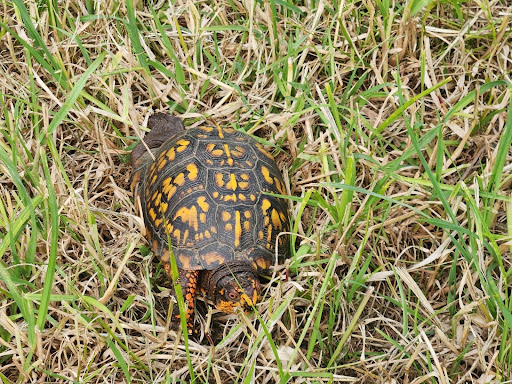
Eastern Box Turtle (Terrapene carolina carolina)
The eastern box turtle is one of our region’s most terrestrial turtles. You may find them hunting in streams like other turtles, especially the younger box turtles, but as they age they spend more time on land in both fields and forests and become more herbivorous.
Their home ranges cover about 10 acres, and they eat a wide range of foods. The patterns on the Eastern box turtle’s intricate black and yellow shells are unique to every individual. These patterns’ evolutionary purpose is to blend into the background among the mud and leaves, but the unintended result is a very snazzy looking turtle.
Beyond looking cool, box turtles’ shells have the impressive ability of shutting the head-hole like a box to protect the turtle from the claws, beaks, and teeth of their would-be predators. One of the biggest threats to this turtle is poaching for the pet trade, so let’s be sure to appreciate these turtles in the wild but respect their right to go about their turtle lives as they please. Obscuring location information when posting photos of these turtles is a great way to share the love while keeping them safe.
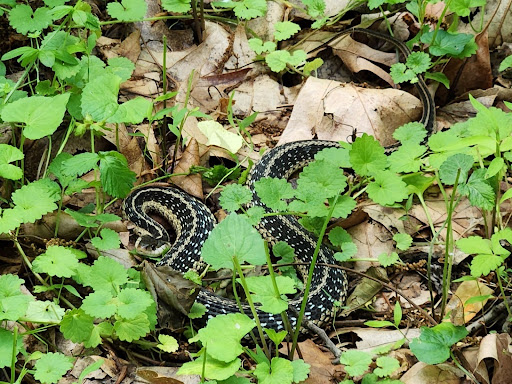
Eastern Garter Snake (Thamnophis sirtalis sirtalis)
If you have ever seen a snake in Southeastern Pennsylvania, it was likely an eastern garter snake. Small, quick, and non-venomous, these ubiquitous snakes should be appreciated for their adaptability and tenacity. Garter snakes will eat basically any creature that is both alive and smaller than them. On the flip side, they are eaten by just about any carnivore or omnivore bigger than them.
Their generalist lifestyle allows garter snakes to make use of a wide range of habitats, from fields to forests to streams to backyards and even vacant lots. They compensate for their long list of potential predators by giving birth to many live young at a time, with a single female capable of birthing as many as 57 babies at once.

Photo from Flickr, attribute to Steve 1828, CC BY-NC-ND 2.0
Groundhog (Marmota monax)
The rodent order (Rodentia) makes up 42% of all mammal species. This order breaks down into 35 families, with our groundhogs falling within the relatively small marmot genus (Marmota) within the squirrel family (Sciuridae). The groundhogs you see snuffling around in yards during the summer months are the largest species of marmot, weighing in at 10-11 pounds by the end of fall.
Their size is an asset. Adults can worry less about foxes who would rather hunt smaller rodents and birds. Adult groundhogs and foxes even share dens on occasion, a truce that one can only imagine is uneasy. These hulking ground squirrels haven’t totally shunned the climbing life of their cousins. Occasionally they will climb into a shrub or small tree if there is a treat like berries worth the effort.
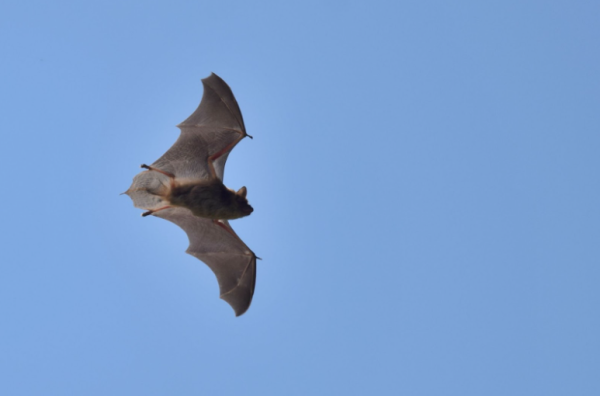
Photo from Flickr, attribute to Andy Reago and Chrissy McClarren, CC BY 2.0
Big Brown Bat (Eptesicus fuscus)
After rodents, bats are the next biggest order of mammals (23% of mammal species), with bats found on every continent except Antarctica. Pennsylvania has several bat species, but the biggest and most common is the big brown bat (apparently whoever was in charge of coming up with the common name for this species was not feeling very creative).
Bats are often unfairly maligned. Their “scariness” is reinforced every Halloween by movie tropes and decorations, even though these flying fur balls have often either begun hibernation or migrated south by the time the end of October comes around. What people don’t see (because it happens in the dark) is that bats are some of the most skilled fliers and wildly effective hunters, catching and eating up to their body weight in insects each night. Their prey includes mosquitos and agricultural pests like cucumber beetles, ground beetles, scarab beetles, snout beetles and stink bugs.
These nighttime feats of speed and dexterity are guided by bats’ sense of echolocation, whereby a bat calls repeatedly and judges distance to an object based on the time it takes for the echo to return to their ears. What makes the mechanics of this sense even more difficult is that often both they and the primary objects of their search, insects, are flying while this echolocation is happening. In order to get a loud enough echo bouncing off these tiny insects, big brown bats shout at 83 to 106 decibels, a loudness equivalent to a garbage disposal at the quiet end of the spectrum or a plane’s jet engine at takeoff at the loudest. That’s right, a mammal that weighs less than an ounce is capable of noises comparable to engines. We can’t hear these shouts because they are too high pitched for our ears, but if we could, we would experience the night very differently.
Let’s Keep Common Species Common
Even the common species are capable of impressive accomplishments in their efforts to survive and thrive on this ever changing planet.
Given how much we have changed our environment in the past century and how much it will likely change in the next century, it is important to remember that even abundant species can quickly go extinct. Take passenger pigeons for example. Once numbering in the billions, overhunting caused passenger pigeons to quickly decline over the course of the 19th century. The last known wild passenger pigeon was shot down in 1900 and the last captive passenger pigeon died in 1914 in the CIncinnati Zoo. A similar fate almost befell the American bison, and circling back to Madagascar, the exact same fate befell the large sloth lemur endemic to that island.
Overhunting isn’t the only concern. Introduced diseases and species wreak havoc as demonstrated by the loss of 4 billion American chestnut trees from the eastern half of North America in the first half of the 20th century due to an introduced chestnut blight. The big brown bats highlighted above have declined in recent years due to white-nose syndrome, along with other bat species.
Habitat loss and fragmentation, too, causes population declines as the estern box turtle is experiencing. The point is not the doom and gloom, not anxiety for the future. The point is that nothing is guaranteed. The future is what we make it. We can work to shape outcomes and avert catastrophes. We just have to set those goals and put resources towards them. No species’ fate is sealed until the last individual dies.
The future is inherently uncertain, so let’s be sure to give thanks in the present while we try to set up a better future.
Author Katie Toner is a Conservation Easement Steward at Heritage Conservancy and a regular writer of Nature Notes. Read more.
Sources
For each bird species: All About Birds, Cornell Lab of Ornithology
Chickadees: https://www.americanscientist.org/article/the-complex-call-of-the-carolina-chickadee
Blue jays: https://auduboncnc.org/oaks-and-jays/
American crow: https://www.audubon.org/news/did-crows-actually-make-these-gifts-human-who-feeds-them
Mammal species numbers: mammaldiversity.org
Garter snake: https://www.virginiaherpetologicalsociety.com/reptiles/snakes/eastern-gartersnake/index.php https://www.paherps.com/herps/snakes/garter_snake/
Box Turtle: https://nationalzoo.si.edu/animals/eastern-box-turtle
Big Brown Bat: https://www.batcon.org/bat/eptesicus-fuscus/
https://www.utoledo.edu/al/psychology/pdfs/comphearaudio/AudiogramoftheBigBrownBat1997.pdf
https://www.iacacoustics.com/blog-full/comparative-examples-of-noise-levels
American Chestnut: https://tacf.org/history-american-chestnut/
